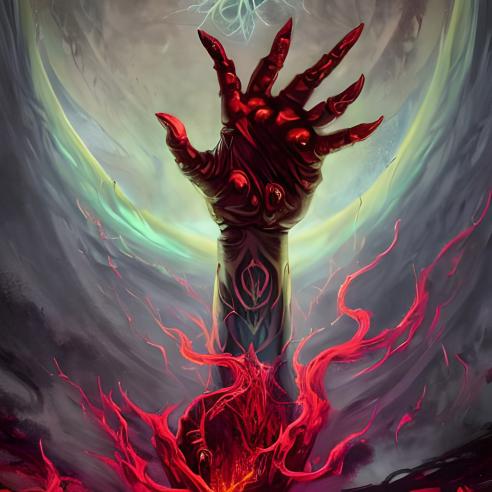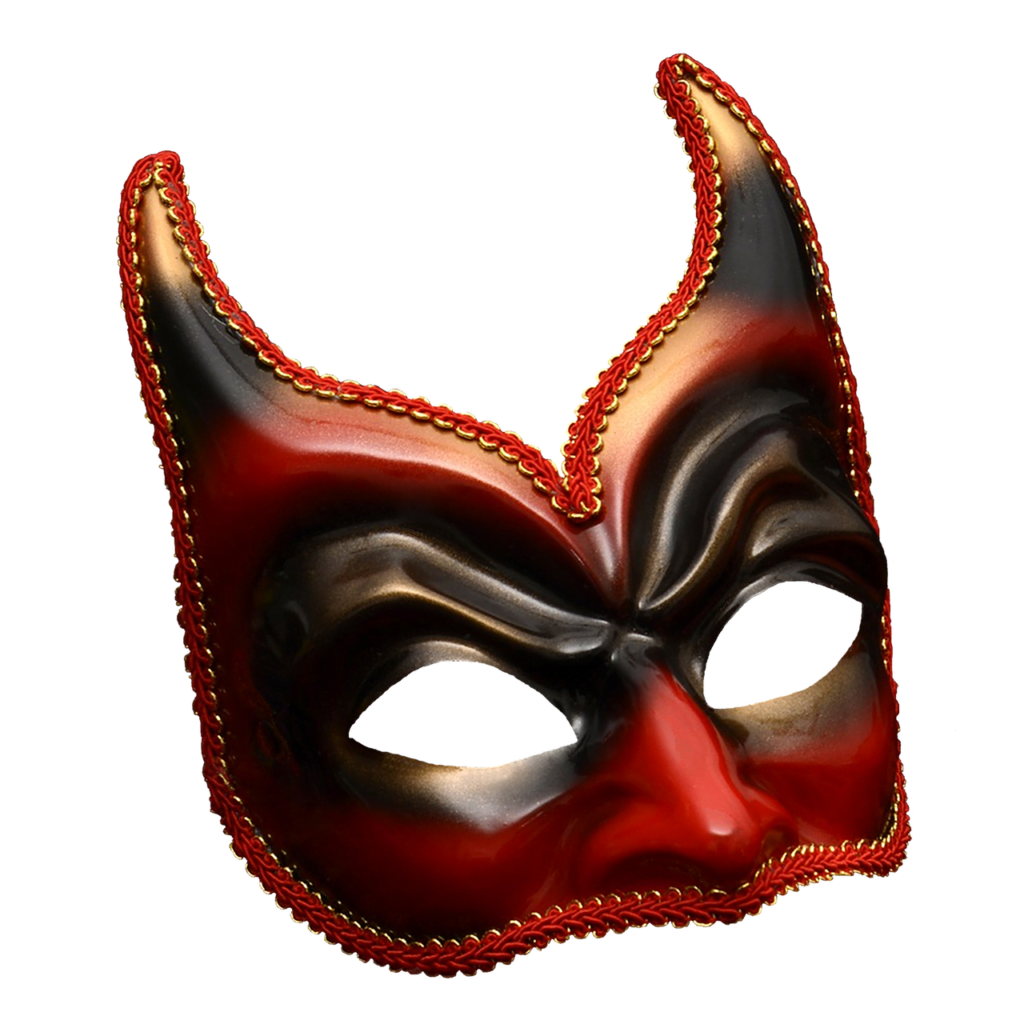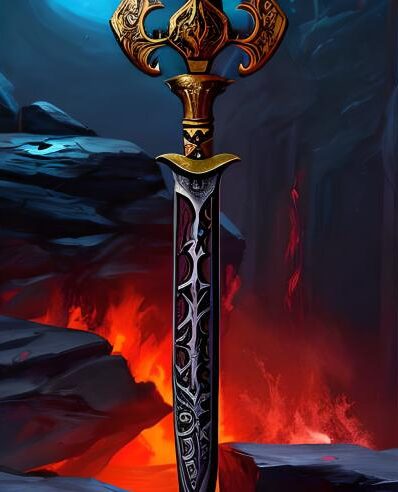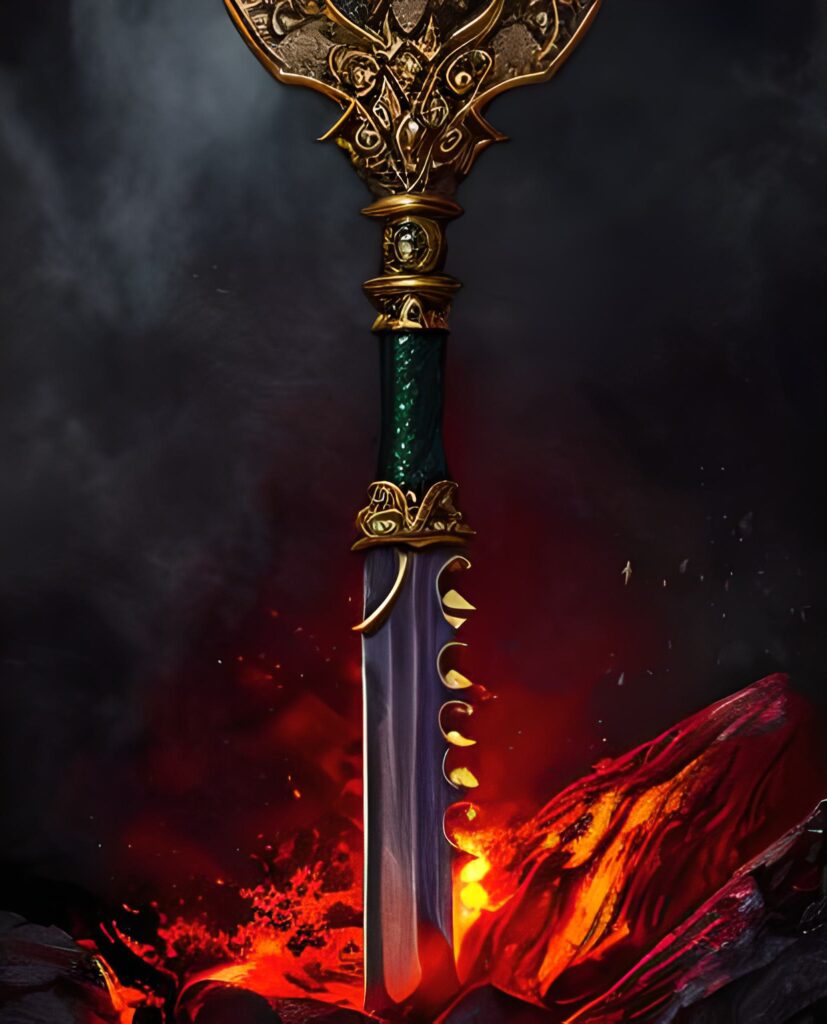Cursed Items

Cursed items are any magic items with some sort of potentially negative impact on the user.
Occasionally they mix bad with good, forcing characters to make difficult choices. Cursed items are almost never made intentionally. Instead they are the result of rushed work, inexperienced crafters, or a lack of proper components. While many of these items still have functions, they either do not work as intended or come with serious drawbacks. When a magic item creation skill check fails by 5 or more, roll on Table: Common Item Curses to determine the type of curse possessed by the item.
| Common Item Curses | |
| d% | Curse |
| 01-15 | Delusion |
| 16-35 | Opposite effect or target |
| 36-45 | Intermittent functioning |
| 46-60 | Requirement |
| 61-75 | Drawback |
| 76-90 | Completely different effect |
| 91-100 | Substitute specific cursed item on Table: Specific Cursed Items |
Identifying Cursed Items: Cursed items are identified like any other magic item with one exception: unless the check made to identify the item exceeds the DC by 10 or more, the curse is not detected. If the check is not made by 10 or more, but still succeeds, all that is revealed is the magic item’s original intent. If the item is known to be cursed, the nature of the curse can be determined using the standard DC to identify the item.
Removing Cursed Items: While some cursed items can be simply discarded, others force a compulsion upon the user to keep the item, no matter the costs. Others reappear even if discarded or are impossible to throw away. These items can only be discarded after the character or item is targeted by a remove curse or similar magic. The DC of the caster level check to undo the curse is equal to 10 + the item’s caster level. If the spell is successful, the item can be discarded on the following round, but the curse reasserts itself if the item is used again.
Common Cursed Item Effects
The following are some of the most common cursed item effects. GMs should feel free to invent new cursed item effects to fit specific items.
Delusion
The user believes the item is what it appears to be, yet it actually has no magical power other than to deceive. The user is mentally fooled into thinking the item is functioning and cannot be convinced otherwise without the casting of remove curse.
Opposite Effect or Target
These cursed items malfunction, so that either they do the opposite of what the creator intended, or they target the user instead of someone else. The interesting point to keep in mind here is that these items aren’t always bad to have. Opposite-effect items include weapons that impose penalties on attack and damage rolls rather than bonuses.
Just as a character shouldn’t necessarily immediately know what the enhancement bonus of a non-cursed magic item is, she shouldn’t immediately know that a weapon is cursed. Once she knows, however, the item can be discarded unless some sort of compulsion is placed upon it that compels the wielder to keep and use it. In such cases, a remove curse spell is generally needed to get rid of the item.
Intermittent Functioning

The three varieties of intermittent functioning items all function perfectly as intendedat least some of the time. The three varieties are unreliable, dependent, and uncontrolled items.
Unreliable: Each time the item is activated, there is a 5% chance (0105 on d%) that it does not function.
Dependent: The item only functions in certain situations. To determine the situation, select or roll on the following table.
Uncontrolled: An uncontrolled item occasionally activates at random times. Roll d% every day. On a result of 0105 the item activates at some random point during that day.
Requirement

Some cursed Items have stringent requirements that must be met for them to be usable. To keep an item with this kind of curse functioning, one or more of the following conditions must be met.
- Character must eat twice as much as normal.
- Character must sleep twice as much as normal.
- Character must undergo a specific quest (one time only, and the item functions normally thereafter).
- Character must sacrifice (destroy) 100 gp in valuables per day.
- Character must sacrifice (destroy) 2,000 gp worth of magic items each week.
- Character must swear fealty to a particular noble or to his entire family.
- Character must discard all other magic items.
- Character must worship a particular deity.
- Character must change her name to a specific name. The item only works for characters of that name.
- Character must add a specific class at the next opportunity if not of that class already.
- Character must have a minimum number of ranks in a particular skill.
- Character must sacrifice some part of her life energy (2 points of Constitution) one time. If the character gets the Constitution points back (such as from a restoration spell), the item ceases functioning. (The item does not cease functioning if the character receives a Constitution increase caused by level gain, a wish, or the use of a magic item.)
- Cursed Items must be cleansed with holy water each day.
- Item must be used to kill a living creature each day.
- Item must be bathed in volcanic lava once per month.
- Item must be used at least once a day, or it won’t function again for its current possessor.
- Item must draw blood when wielded (weapons only). It can’t be put away or exchanged for another weapon until it has scored a hit.
- Item must have a particular spell cast upon it each day (such as bless, atonement, or animate objects).
Requirements are so dependent upon suitability to the item that they should never be determined randomly. An intelligent item with a requirement often imposes its requirement through its personality. If the requirement is not met, the item ceases to function. If it is met, usually the item functions for one day before the requirement must be met again (although some requirements are one time only, others monthly, and still others continuous).
| Cursed Items Intermittent Functioning Triggers | |
| d% | Situation |
| 01-03 | Temperature below freezing |
| 04-05 | Temperature above freezing |
| 06-10 | During the day |
| 11-15 | During the night |
| 16-20 | In direct sunlight |
| 21-25 | Out of direct sunlight |
| 26-34 | Underwater |
| 35-37 | Out of water |
| 38-45 | Underground |
| 46-55 | Aboveground |
| 56-60 | Within 10 feet of a random creature type |
| 61-64 | Within 10 feet of a random race or kind of creature |
| 65-72 | Within 10 feet of an arcane spellcaster |
| 73-80 | Within 10 feet of a divine spellcaster |
| 81-85 | In the hands of a nonspellcaster |
| 86-90 | In the hands of a spellcaster |
| 91-95 | In the hands of a creature of a particular alignment |
| 96 | In the hands of a creature of a particular gender |
| 97-99 | On holy days or during particular astrological events |
| 100 | More than 100 miles from a particular site |
Drawback
Cursed Items with drawbacks are usually still beneficial to the possessor but carry some negative aspect. Although sometimes drawbacks occur only when the item is used (or held, in the case of some weapons), usually the drawback remains with the character for as long as she has the item.
Unless otherwise indicated, drawbacks remain in effect as long as the item is possessed. The DC to save against any of these effects is usually equal to 10 + the item’s caster level.
| Cursed Items Drawbacks | |
| d% | Drawback |
| 01-04 | Character’s hair grows 1 inch longer every hour. |
| 05-09 | Character either shrinks 6 inches (01-50 on d%) or grows that much taller (51-100). Only happens once. |
| 10-13 | Temperature around item is 10° F cooler than normal. |
| 14-17 | Temperature around item is 10° F warmer than normal. |
| 18-21 | Character’s hair color changes. |
| 22-25 | Character’s skin color changes. |
| 26-29 | Character now bears some identifying mark (tattoo, weird glow, or the like). |
| 30-32 | Character’s gender changes. |
| 33-34 | Character’s race or kind changes. |
| 35 | Character is afflicted with a random disease that cannot be cured. |
| 36-39 | Item continually emits a disturbing sound (moaning, weeping, screaming, cursing, insults). |
| 40 | Item looks ridiculous (garishly colored, silly shape, glows bright pink). |
| 41-45 | Character becomes selfishly possessive. |
| 46-49 | Character becomes paranoid about losing the item and afraid of damage occurring to it. |
| 50-51 | Character’s alignment changes. |
| 52-54 | Character must attack nearest creature (5% chance [01-05 on d%] each day). |
| 55-57 | Character is stunned for 1d4 rounds once item function is finished (or randomly, 1/day). |
| 58-60 | Character’s vision is blurry (-2 penalty on attack rolls, saves, and skill checks requiring vision). |
| 61-64 | Character gains one negative level. |
| 65 | Character gains two negative levels. |
| 66-70 | Character must make a Will save each day or take 1 point of Intelligence damage. |
| 71-75 | Character must make a Will save each day or take 1 point of Wisdom damage. |
| 76-80 | Character must make a Will save each day or take 1 point of Charisma damage. |
| 81-85 | Character must make a Fortitude save each day or take 1 point of Constitution damage. |
| 86-90 | Character must make a Fortitude save each day or take 1 point of Strength damage. |
| 91-95 | Character must make a Fortitude save each day or take 1 point of Dexterity damage. |
| 96 | Character is polymorphed into a specific creature (5% chance [01-05 on d%] each day). |
| 97 | Character cannot cast arcane spells. |
| 98 | Character cannot cast divine spells. |
| 99 | Character cannot cast any spells. |
| 100 | Either pick one of the above that’s appropriate or create a drawback specifically for that item. |
Specific Cursed Items
Perhaps the most dangerous and insidious of all cursed items are those whose intended functions are completely replaced by a curse. Yet even these items can have their uses, particularly as traps or weapons. The following are provided as specific examples of cursed items. Instead of prerequisites, each cursed item is associated with one or more ordinary magic items whose creation might result in the cursed item. Cursed items can be sold, if the curse is not known to the buyer, as if they were the item they appear to be.
Cursed suits of armor and weapons can come in many forms, and the examples listed here are merely the most common. For example, a cursed -2 sword, might appear as a +3 shortsword or a +1 dagger, with a similar negative instead of the listed -2.
Many cursed items cannot be discarded unless a successful remove curse, break enchantment, or similar magic is used on them.


 Buy me a coffee
Buy me a coffee